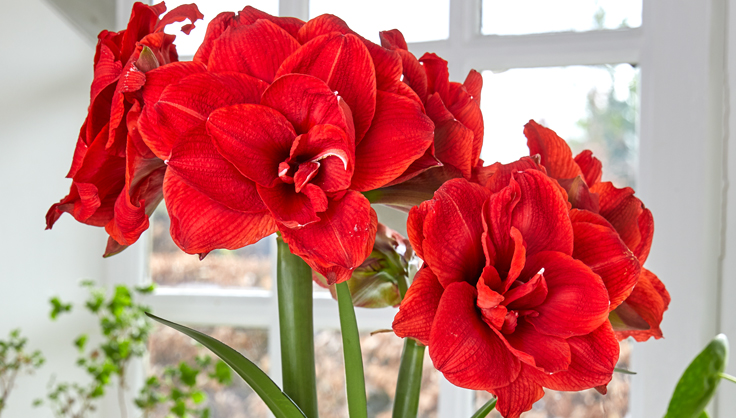Welcome to Facts Vibes! Today, let’s delve into the captivating world of amaryllis. Uncover fascinating amaryllis facts that will leave you in awe of these stunning flowers. From their vibrant colors to their fascinating history, get ready to be amazed by the wonder of amaryllis!
Gorgeous Amaryllis: Uncovering Fascinating Facts
The Gorgeous Amaryllis is a stunning flower that comes with a host of fascinating facts. Native to South Africa, this blooming beauty is not only visually captivating, but it also holds a significant place in history and mythology.
One of the most remarkable characteristics of the Amaryllis is its ability to bloom indoors during the winter months. Its large, striking flowers make it a popular choice for adding a burst of color to homes during the festive season.
Furthermore, the Amaryllis has been the subject of many myths and legends throughout history. In Greek mythology, it is associated with a shepherdess named Amaryllis, who fell in love with a shepherd named Alteo. To win his affection, she pierced her heart with a golden arrow for 30 days, and from her blood grew the splendid flower we now call the Amaryllis.
Moreover, the Amaryllis is not merely ornamental; it also has practical uses. Certain parts of the plant have been used for medicinal purposes, such as treating skin conditions and fevers. Additionally, the bulb of the Amaryllis can be forced to bloom at specific times, making it a unique and versatile flower for both professional growers and enthusiastic gardeners.
In conclusion, the Gorgeous Amaryllis is much more than just an aesthetically pleasing flower. Its rich history, mythology, and practical applications make it a fascinating subject to explore for botany enthusiasts and anyone with an appreciation for natural beauty.
Most popular facts
Amaryllis is a perennial flowering plant native to South Africa.
Amaryllis is a perennial flowering plant native to South Africa.
The most common colors of amaryllis flowers are red, pink, white, and orange.
The most common colors of amaryllis flowers are red, pink, white, and orange.
Amaryllis bulbs can be forced to bloom indoors during the winter months.
Yes, Amaryllis bulbs can be forced to bloom indoors during the winter months.
These plants are part of the Amaryllidaceae family, along with daffodils and snowdrops.
These plants belong to the Amaryllidaceae family, which also includes daffodils and snowdrops.
Amaryllis flowers have trumpet-shaped blooms with six petals.
Amaryllis flowers have trumpet-shaped blooms with six petals.
The scientific name for amaryllis is Hippeastrum.
True.
Amaryllis can grow up to 18-36 inches in height.
Yes, Amaryllis can grow up to 18-36 inches in height.
They prefer well-draining soil and full sun to partial shade.
They prefer well-draining soil and full sun to partial shade.
Amaryllis bulbs can be stored and replanted for multiple years.
Yes, Amaryllis bulbs can be stored and replanted for multiple years.
The name “amaryllis” comes from the Greek word “amarullis,” which means “sparkling.”
The name “amaryllis” comes from the Greek word “amarullis,” which means “sparkling.”
Amaryllis bulbs contain toxins that can be harmful to pets if ingested.
Yes, Amaryllis bulbs contain toxins that can be harmful to pets if ingested.
In Greek and Roman mythology, amaryllis symbolizes pride, determination, and splendid beauty.
In Greek and Roman mythology, amaryllis symbolizes pride, determination, and splendid beauty.
Amaryllis is often used as a decorative houseplant during the holidays.
Amaryllis is often used as a decorative houseplant during the holidays.
Some varieties of amaryllis can produce multiple flower stalks per bulb.
Yes, some varieties of amaryllis can produce multiple flower stalks per bulb.
Amaryllis plants are relatively easy to care for and can thrive indoors or outdoors in the right conditions.
Amaryllis plants are relatively easy to care for and can thrive indoors or outdoors in the right conditions.
In conclusion, the amaryllis is a fascinating plant with a rich history and many interesting facts. Its beauty, symbolism, and versatility make it a beloved choice for both indoor and outdoor gardening. Whether you’re a seasoned gardener or just starting out, the amaryllis is a stunning plant that’s sure to bring joy and beauty to any space.
